Lessons Learned One Year After the COVID-19 Shutdown
Take a closer look at how the dental industry adapted and how to move forward.
©phonlamaiphoto; mariia_may/Adobe.stock.com

Last year, the coronavirus disease 2019 (COVID-19) pandemic shuttered most dental practices in the United States. Although a year has passed, it’s an unusual anniversary and not one to be celebrated. As vaccines roll out across the country, some semblance of normalcy may be on the horizon. Yet COVID-19 has left its mark on most facets of life, and the dental industry is not exempt.
But dentistry is rebounding from the effects of COVID-19 shutdowns. According to Daniel Klemmedson, MD, DDS, president of the American Dental Association (ADA) and an oral and maxillofacial surgeon in Tucson, Arizona, although practices are not operating at prepandemic levels, dentistry is bouncing back much better than many industries. Even under such unusual circumstances, dental professionals can feel reassured in their ability to provide care in a safe environment. Dr Klemmedson credits this to the dental industry’s ability to learn and collaborate to develop solutions.
“All companies in the dental and oral health care industry pretty much responded together,” Dr Klemmedson says. “Collaboration in a big industry like this is sometimes more hype than reality, but this year it has been lots of reality. Our profession clearly has the capacity to respond rapidly and make changes.”
Moreover, Dr Klemmedson says, the swift responses and fast changes made some great innovations relative to disinfection and air movement. These changes might have taken more time without the pandemic.
Teledentistry platforms, such as MouthWatch’s TeleDent, represent perhaps one of the biggest, swiftest changes the dental industry made during the early days of the coronavirus disease 2019 pandemic. Limited evaluations can take place during synchronous or asynchronous virtual appointments.
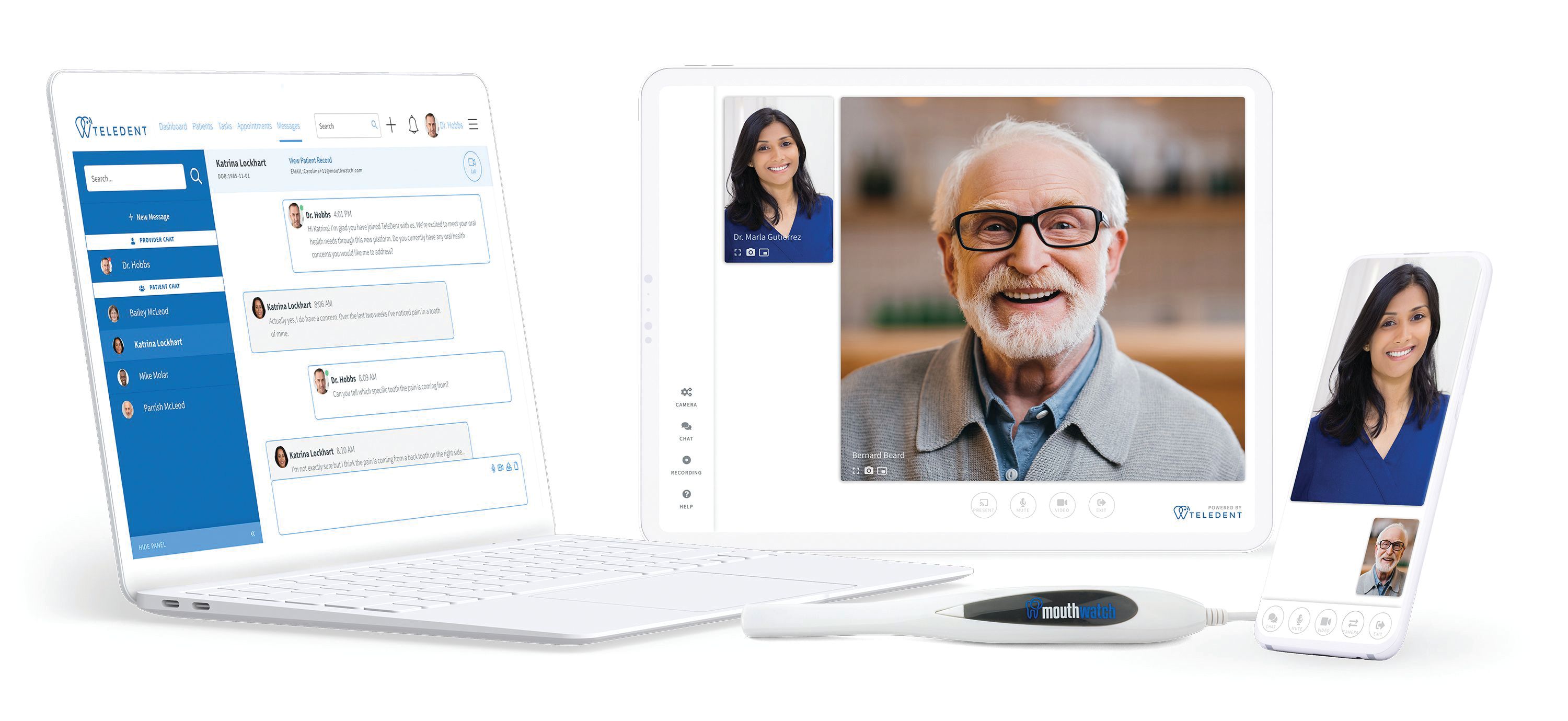
“I imagine probably for years to come, we will benefit from all the things people have thought about when trying to get back to normal,” Dr Klemmedson says. “We learned that we don’t know everything. We also learned that there are a whole bunch of smart people out there, and if we all put our minds together, we can accomplish more than any of us can individually.”
According to John Flucke, DDS, technology editor for Dental Products Report™, significant changes manifested in all dental practice areas, from usual dental suppliers to how dentists control the practice environment to the locations in which patients interact with the team. The beginning of the pandemic spotlighted problems with supply chains and dental practices that use a zero-inventory business model, particularly for personal protective equipment (PPE).
According to Dr Flucke, supply chain and personnel shortages affected the immediacy of this technology too. For example, he says, it took 2 months to repair electric handpieces because the repair center was working at a quarter of its capacity. For critical things like PPE, dentists learned they needed to stockpile a bit with more working inventory.
“We need to have a better working inventory than some of us have ever had in our lives,” Dr Flucke says.
The shutdown revealed the critical nature of an emergency savings plan, says Mark Hyman, DDS, MAGD, an adjunct full professor and special assistant to the Office of the Dean at the University of North Carolina Adams School of Dentistry in Chapel Hill, North Carolina and an international speaker for the dental industry. He says many practices lacked the inventory to survive being closed for a few weeks or months.
“People were not prepared to not work, and that was one of the biggest challenges,” Dr Hyman says.
The pandemic highlighted the power of dental and medical integrations, according to Jason H. Goodchild, DMD, director of clinical affairs for Premier Dental Co. He says that although dentists have always known they had a significant role, COVID-19 shone a light on how dentistry complements the medical system.
“We learned that the dental, medical integration is something we need to focus on more,” Dr Goodchild says. “We play a vital ole in promoting overall health, and during the shutdown, we helped to manage dental emergencies and kept patients from presenting to hospital emergency departments. In some states, dentists can be one of the front lines for the vaccination effort. What about COVID-19 screening and other types of health screenings? It brought all of these opportunities into focus.”
Refera is an online contract-free referral platform that allows clinicians to monitor patients’ progress with their referred specialist and easily transitions patients to the care of another provider.

Dentists are highly trained health care professionals that can help a lot, Dr Goodchild explains. Because some patients see their dentists more often than their physicians, dental professionals could screen and monitor health conditions not traditionally thought of within the dental scope. Dental professionals could also administer rapid COVID-19 or antigen testing in the office.
“People see the integration of all parts of the system, so we can all come together to solve problems like COVID-19,” Dr Goodchild says. “Dentistry is more than drilling and filling.”
Recent study results from an article published in the Journal of Clinical Periodontology suggest that patients with periodontitis were 3 times more likely to have severe COVID-19 complications than those who did not.1 The investigators also discovered that patients with periodontitis had higher amounts of biomarkers that experts associate with the worst COVID-19 outcomes.1 Dr Klemmedson says that now when the world is trying to determine what makes COVID-19 outcomes better or worse and periodontal disease comes up as a marker, it draws attention to the dental/medical relationship from a greater number of individuals.
Alice Limkakeng, CEO of SleepArchiTx, agrees that emphasizing the role dentists play in overall health is vital and will help patients return to the dental practice, even if they have concerns during the pandemic. She says that screening for and treating sleep issues within the dental practice solidifies this connection.
“Rather than thinking of your dentist as someone who fixes a cavity or cleans your teeth, it changes the perception of the dentist as critical to your overall health,” she says. “To us, sleep is a gateway to that conversation.”
Limkakeng says one of the silver linings from the past year is that dentists gained recognition as frontline, essential providers for treating patients for sleep disorders. The Journal of Dental Sleep Medicine recently published a report that found continuous positive airway pressure [CPAP] machines increase virus transmission, making oral appliance therapy the safest choice for treating sleep disorders.2
SleepArchiTx’s Certified Provider System provides dental practices with everything needed to start a dental sleep therapy program, including billing services and sleep appliances, such as the Aligner Sleep Appliance, pictured here.
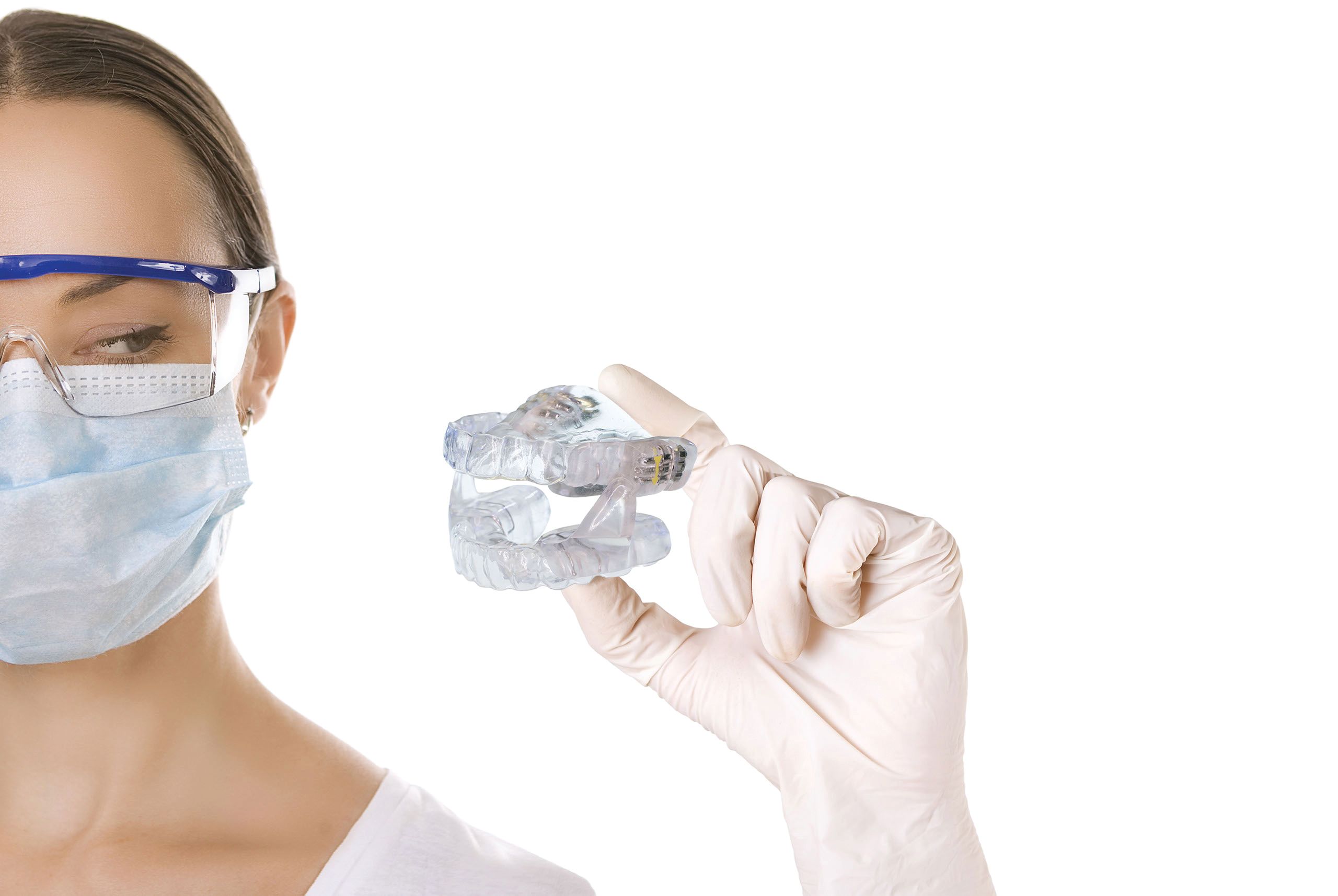
“Dentists can jump into [appliance therapy] with the science supporting them,” Limkakeng says. “It’s a great opportunity with this type of support for a dentist to emphasize their essential nature in a person’s overall health and not be thought of as a secondary provider or an optional visit.”
Limkakeng encourages dentists to embrace this opportunity through social media. She says initiating digital engagement with patients is crucial following the pandemic. Moreover, SleepArchiTx created several tools for dentists to use to interact with their patient base regarding sleep. These new social media tools are now included in SleepArchiTx’s Certified Provider System, which provides dental practices with everything needed to start or boost a dental sleep therapy program in their practice, including a portfolio of appliances and billing services.
“We learned that leveraging social media channels can increase engagement on the topic of sleep and snoring,” Limkakeng says. “We hear a lot of hype about it, but it does provide a real opportunity to connect with patients that you should access.”
Brant Herman, CEO of MouthWatch, an oral health teledentistry and technology company, believes the day-to-day effects of infection control protocols and workflow saw the most significant changes from the shutdown. Practices realized the importance of tools that facilitated efficient in-office appointments such as prescreening patients, virtual evaluations, and new scheduling approaches. These changes led to faster adoption of technology, particularly for patient communications.
Moreover, Herman says, dentists learned that some appointments don’t have to occur in the physical office. For example, postoperative checks or periodic/limited evaluations could integrate into synchronous or asynchronous teledentistry appointments—without the barriers of head-to-toe PPE that distances the dentist from patients.
“Many dentists realized that ‘now I can take my face mask and gloves off and have a conversation with you about your treatment in the way we used to, even though it’s happening virtually.’ Ironically, the virtual consult outside of a clinical setting is becoming more face-to-face than many in-office treatment discussions,” Herman says.
Many practices jumped on FaceTime or Zoom at the onset of the pandemic and related shutdowns. However, Herman says they realized these were only short-term solutions that did not provide all the functionality the team wanted for patient communication.
“Practices wanted a sustainable way to maintain the convenience in communication and collaboration that would last beyond the extended closure of a practice, beyond emergency treatment,” Herman says. “Dentists realized that they needed something to help them out in the long run.”
Riddhi Gangolli, DDS, PhD, MS, senior director of marketing and education at SmileDirectClub, says that the roller coaster dental practices experienced last year forced dental professionals to seek alternative revenue streams and be more creative with their competitive solutions. Moreover, she agrees that telehealth and teledentistry’s mass normalization and adoption during the shutdown for COVID-19 moved the industry into this area faster than it might have otherwise.
The coronavirus disease 2019 pandemic likely moved the industry to adopting virtual platforms, such as SmileDirectClub’s Telehealth mobile app.
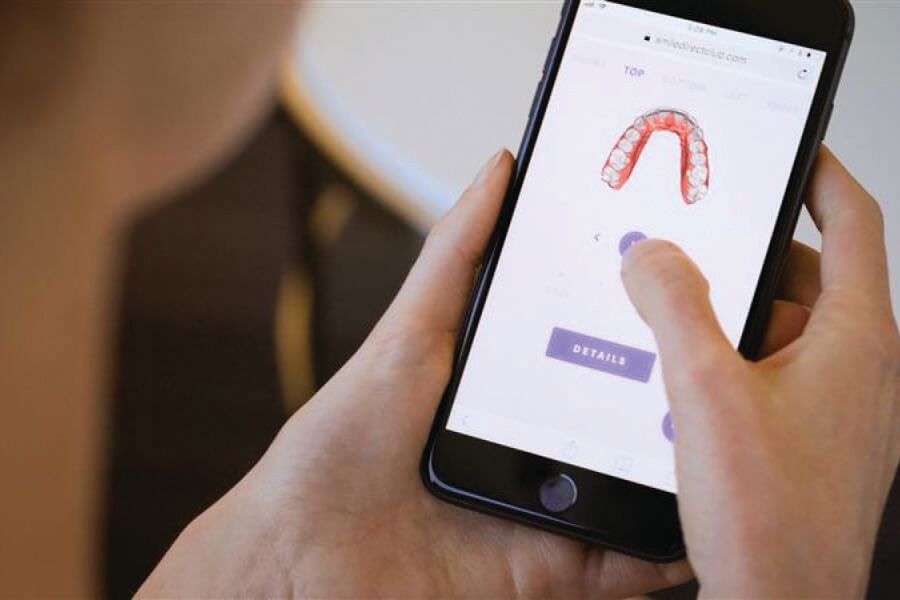
“A lot of doctors are looking at telehealth and teledentistry more favorably because they’ve come to see the value and convenience it provides to safely stay in contact and make sure that patients are following their treatment plans as expected,” Dr Gangolli says.
According to Dr Gangolli, the dental industry had a wake-up call this past year, with revenues dropping as much as 38%, by the ADA’s projections.3 However, how dental professionals responded showed how agile the industry could be.
“In a way, it shined a light on the part of dentistry that was not as obvious,” Dr Gangolli says.
Dr Gangolli and the team at SmileDirectClub spent time during the pandemic to further enhance their pioneering teledentistry platform, rolling out features like video chat and an app to provide a better patient experience.
Jody Rodney, vice president of marketing and education at Planmeca, agrees with Dr Gangolli and Herman, adding that despite the downturn in revenue related to the pandemic, many dentists were willing to invest in technology. By December, she says, many had recovered enough to go ahead with technology investments in digital workflows for same-day dentistry.
“They held off a little bit,” Rodney says, “but then in December, we saw a surge.”
Rodney also says that practices that invested in CAD/CAM, in particular, could respond to patients’ safety concerns. These dentists could treat their patients in 1 visit versus making them return.
“It’s always been important to try to improve production and not have to switch operatories multiple times, but now it’s a whole new level because patients don’t want to come back. And others, especially older patients, want to reduce their risk as much as possible,” Rodney explains.
Sam Ahani, DDS, founder and CEO of Refera, an online referral platform for general practitioners and specialists, says that COVID-19 has increased the focus on the patient experience rather than on productivity. He thinks that practices will see fewer patients but enjoy increased revenue.
“Slowing down is not a bad thing for offices in general,” Dr Ahani says. “We have always spent time with patients. Whenever you start to focus on the patients you have in the office, invariably, they accept treatment more often.”
However, Dr Ahani says the environment he encounters with dental practices when he discusses Refera is cautious. With so many dentistry changes in general, many practices don’t want to automate too much and overwhelm the team. However, Dr Ahani says automation and adaptation for businesses are crucial to dental practices in some ways.
“Successful practices must now shift to improving patient experience and going contactless whenever possible because patients are now worried about not only going to the dentist but also bringing COVID-19 home from the dentist,” Dr Ahani says. “It’s the same way they now worry about bringing it home from the grocery store and gas station. COVID-19 has scared everyone, and now people pay much more attention to details of their interactions with others than before.”
Jeff Lineberry, DDS, FAGD, FICOI, AAACD, has a private practice in Mooresville, North Carolina, and is a frequent dental industry lecturer. During the pandemic, many practices experienced a decrease in regular traffic and frequency for routine care. Moreover, the ADA projected last June that dental spending would be down 20% this year.3 This did not surprise Dr Lineberry.
“I don’t think we will see a shift in things until the vaccination calms things down, and we see a decrease in the number of cases,” Dr Lineberry says.
According to Dr Lineberry, when patients put routine care off, the consequences are that it becomes a habit. Individuals begin not to see the value in regular dental care, leading to more severe conditions when they do finally make it into the office. This result is something he already is already seeing in his practice.
“As a direct result of COVID-19-related postponement, we have seen an increase in patients with periodontal disease, which could be because wearing masks means they are becoming mouth breathers,” Dr Lineberry says. “People are also coming in with cracked teeth from bruxing caused by the increased stress of dealing with everything.”
Planmeca’s PlanMill 50 S allows for same-day workflows, eliminating the need for patients to visit the practice for multiple appointments.
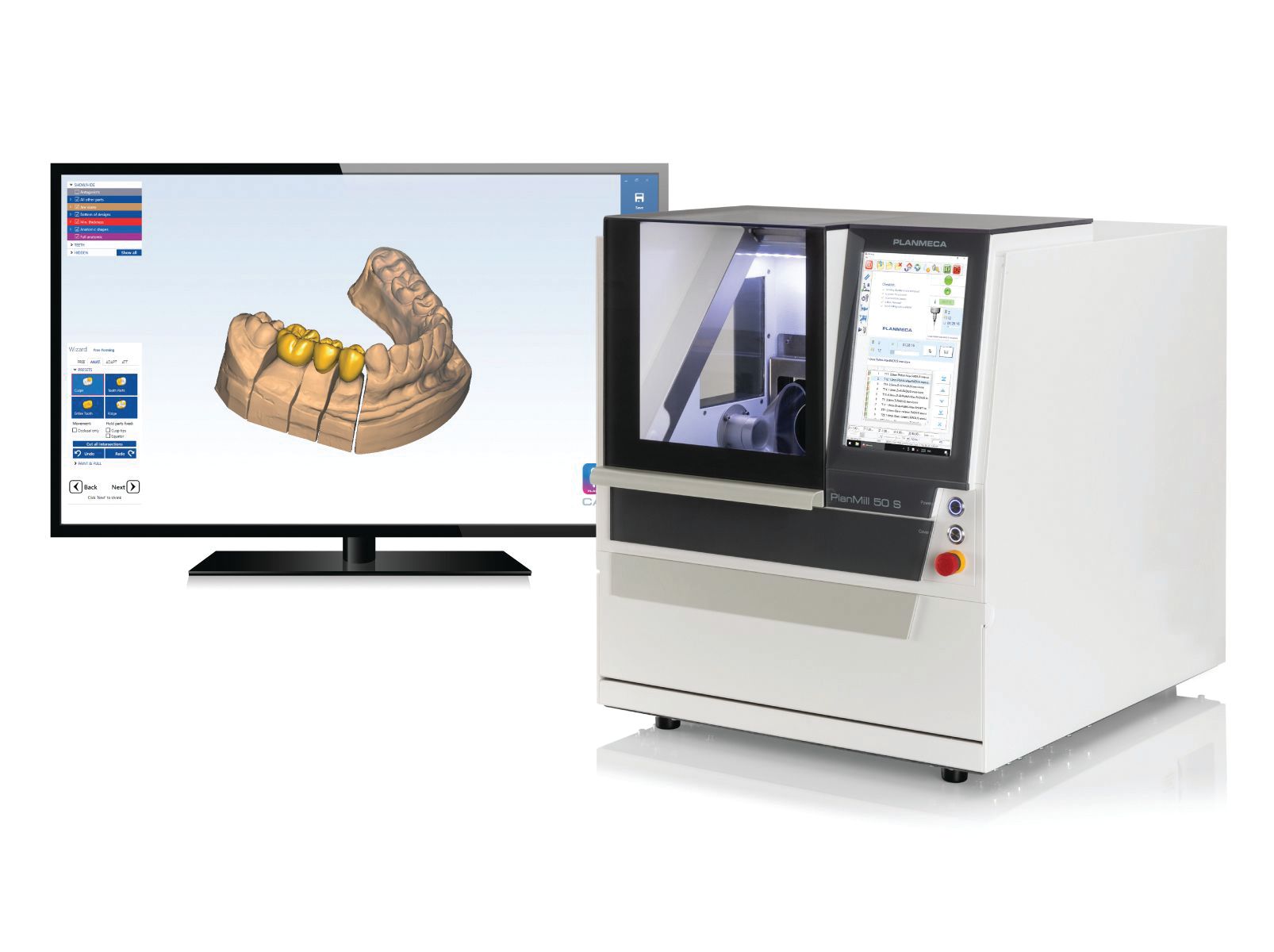
A beneficial change in the practice’s day-to-day business is how Dr Lineberry handles the patient process. Patients no longer check out at the front desk on their way out. Check out business happens in the operatory before patients get out of the chair, which helps in a couple of ways.
“First, it reduces exposure to other patients by keeping everyone out of the common area,” Dr Lineberry says. “Second, it’s nice to have a private area to discuss treatment instead of catching them as they are running out the door.”
The infection control changes that COVID-19 necessitated will be here to stay, Dr Lineberry believes. Dentistry is no stranger to infection control, having weathered other health epidemics, and the industry has always done a lot as far as infection control. However, some of the details with COVID-19 prevention have led to patient flow changes that many practices will continue.
“People are OK not sitting in the waiting room,” Dr Lineberry says. “And I don’t perceive that changing anytime soon, realistically speaking. We have retrained society in the past year.
“Plus, we will have to see what happens with the virus,” Dr Lineberry continues. “We have seen new variants, and that means we may end up having to continue with prescreening like we have been, which we didn’t do regularly before.”
Where Do Dental Professionals Go From Here?
Practices can do many things to bring patients back and move revenues back into the black, including COVID-19 vaccine administration, improved communication, and professional coaching.
According to Dr Klemmedson, it is critical that dentists get their vaccines, educate their patients about vaccines, and give vaccines wherever possible. He also wants dentists to remember that even though most practices are working again, they are not providing care at 100% of prepandemic levels. Many individuals, particularly in underserved communities, are not getting the care they need, for a variety of reasons. He says it is incumbent on dental professionals to ensure that individuals who haven’t been coming in have access to the care they need.
“We have got to find a way to take care of those people,” Dr Klemmedson says.
Although things have changed, Dr Flucke would like individuals to realize that not everything will be different. He wants the practice to communicate that the relationships are still there.
“Having the ability to communicate quickly and efficiently with people is a tremendous help,” Dr Flucke says.
Located in Lee’s Summit, a suburb of Kansas City, Missouri, Dr Flucke says his practice didn’t have a problem with patients not coming back after the shutdown. He thinks that their strategy of emailing patients when the practice reopened helped. The email explained what patients could expect and all the ways Dr Flucke and his team modified their processes to keep patients safe. Then, patients could schedule care for themselves from a link in the email. Dr Flucke thinks a similar strategy would work today for patients who have not yet returned since the onset of the pandemic.
“Look at what you have done, the processes you have in place, the resources invested, and then put together an email or a web page,” says Dr Flucke. “Let the patients know what [you’ve done.] If you build it, they will come. If they don’t see that you have done anything, they might be scared to come back.”
Dr Hyman recommends a savings plan for every dental practice, as even a small amount every day can make a difference over a year. One tactic he suggests is making 8 AM patients the savings for the day, with the rest of the day going into the other areas of the practice. Saving allows dental professionals to secure their family’s future in uncertain times.
In addition to saving for a rainy day, Dr Hyman recommends looking at investments in the practice through the lens of how this funding may make practices more efficient and still deliver excellent care. Some systems can add more time per day that dentists lose to inefficiencies and interruptions. Some examples can be streamlining infection control by managing splatter with the Isolite® from Zyris; automating communication and facilitating payment with patient communication systems such as Weave; and using products such as the Onset® Buffering System from Onpharma, which allow dentists to streamline treatment productivity while improving the patient experience.
“It’s tempting to want all the bells and whistles,” Dr Hyman says. “It’s wrong to invest in things that don’t make you money.”
One investment Dr Hyman thinks can make a significant difference in dental practices is coaching. Although it might seem like a luxury, he says that having the best minds in dentistry to coach dental professionals is essential. Dr Hyman worked with Jameson Management and Marketing, a coaching platform, to improve his impact in the practice because “he was too busy being busy,” he says. The systems that Jameson gave him helped optimize his practice with the right technology and individuals so he could “just dance.”
“That’s when dentistry gets fun,” Dr Hyman says. “When you are working with teammates you love for patients that value what you are doing, everybody wins. Coaching may not seem obvious. It seems expensive to some, but then I say, ‘Compared with what? It may cost you $100 to $200 a day, but if they showed you how to put $1000 a day into your practice, what do you care?’”
Dr Goodchild recommends that doctors analyze how they operate the practice at a granular level. Practices should adapt to the demands of the changing business model that a post–COVID-19 world necessitates moving forward.
“If you are following the guidelines, you are seeing fewer patients and have more time with open chairs, which means the cost of business has gone up,” Dr Goodchild explains. “So, dentists need to determine whether they can do more in a single appointment. Can they get more efficient with block scheduling? It’s time to take a better look at it.”
Dr Goodchild says, at its core, dentistry is still dentistry, so filling cavities and placing crowns remains a significant part of a practice’s revenue. However, he says, procedures have different aerosol risks, and it’s critical to prevent those. Dentists should think more about alternative restorative treatments, like silver diamine fluoride to treat cavities instead of filling them, and advanced preventive measures, like fluoride varnish for specific patient populations.
“We don’t need to solve every problem with a drill,” Dr Goodchild says, adding that insurance company compensation models may need to change to make this new mind-set more permanent.
According to Dr Goodchild, dentistry has reached a stable point in the pandemic. However, that is not an excuse for complacency. He advises dentists to stay on the cusp of what’s happening, improve infection control, and focus on equipment investments to help take the practice to the next level.
“Do not rest and get back into cruise control,” Dr Goodchild says. “Don’t let the guard down.”
Limkakeng says that putting effort into reconnecting with patients will go a long way. Patients will see their dentist’s underlying value with prompt and proactive communication about the dentist’s overall health role.
“Keeping and staying healthy will continue to be important to people in 2021,” Limkakeng says. “Look for some impactful health content you can use to connect with patients. Topics like reducing snoring and getting quality sleep to boost your immune system are very engaging for patients at this time. If you treat patients for sleep, you can re-emphasize the essential role that you, as their dentist, play in their overall health. If you’re not yet treating patients with dental sleep medicine, it’s the perfect time to start.”
Herman suggests embracing the convenience and reach of teledentistry. From preventive care to evaluations to treatment plans, implementing virtual consultation solutions can help dentists move forward in a way patients appreciate. Teledentistry also connects medical and dental collaborations, as well as streamlining referrals. Moreover, teledentistry presents long-term value because, Herman says, patients are “all game” to have this capability.
“This is what patients want as far as convenience,” Herman says.
Dr Gangolli agrees about branching out into new areas of virtual care. She believes the combination of the need for alternative revenue solutions and an increase in digitization created an excellent opportunity for SmileDirectClub’s Partner Network, the company’s turnkey solution for dentists to grow their practice.
“We offer a teledentistry platform that can be fully integrated into practices in a digitized way that enables doctors to grow their business,” says Dr Gangolli. “And we’ve also seen that [patients] are excited about it because they now have another option to start their SmileDirectClub treatment.”
Rodney concurs that branching out and investing in new ways to elevate the patient experience is essential moving forward from the past year. She says that now is not the time to hold back or wait. The thriving practices are the ones that adapted quickly and overhauled their workflows to reduce transmission risks. According to her, dental practices that incorporated Planmeca’s Emerald™ S Intraoral Camera and PlanCAD® Premium benefit from same-day digital workflows. Moreover, with the PlanMill® 30 S and the PlanMill50 S, which launched in November, dentists didn’t have to bring patients back for a second appointment with restorations. Having the restoration on the same day was excellent for patients concerned about reducing transmission risks by eliminating multiple exposures from return visits.
For Rodney, the bottom-line advice is do not delay in these investments. “Your patients shouldn’t be waiting, and you shouldn’t be either. If you are going to invest, do it,” she says.
Dr Ahani agrees that investing in technology that digitizes analog processes for patient flow is vital moving forward. He thinks a significant part of changing the practice flow’s tempo will involve automating and digitizing a lot of the patient experience, including how patients receive and manage referrals to specialists.
Regarding the current referral system, Dr Ahani explains there are still some issues.
“Up to 50% of patients never schedule with a specialist, depending on the specialty, and the specialists don’t know they have been referred to, so they can’t follow up,” says Dr Ahani. “Plus, the general dentist never knows whether the patient went. Both sides lose revenue, and patients [receive] poor treatment.”
Refera’s online platform provides contract-free referrals to specialists. Refera is designed to give patients what Dr Ahani calls “a warm handoff that is seamless and easy.” General dentists enter the patient case details, attach the x-rays, choose any specialist they want, and send the referral via email and text to the patient and specialist. Dr Ahani intends to ensure that patient referrals don’t get lost in the shuffle of day-to-day life.
Dr Lineberry takes a more direct approach to his advice on how dental practices can move forward after COVID-19. “Adapt or die,” he says.
“You have to approach things differently from the standpoint of patient care and how you interact,” Dr Lineberry continues. “In general, everybody has to become adaptive to things from now on. Change is here.”
Dr Lineberry also believes it’s critical for dental professionals to look at the practice metrics and refocus their resources. Everything from customer service to computer systems to staffing should be optimized through a lens of efficiency and being the best they can be, he says.
“Focus on what you can control,” Dr Lineberry adds. “I can’t control a pandemic, but I can control what happens within the 4 walls of this office.”
References
- Marouf N, Cai W, Said KN, et al. Association between periodontitis and severity of COVID-19 infection A case-control study. J Clin Periodontol. Published February 1, 2021. doi.org/10.1111/jcpe.13435
- Schwartz D, Addy N, Levine M, Smith H. Oral appliance therapy should be prescribed as a first-line therapy for OSA during the COVID-19 pandemic. J Dent Sleep Med. 2020;7(3). doi:10.15331/jdsm.7138
- Carey M. HPI research brief, webinar share dental spending projections for 2020 and 2021. American Dental Association. June 25, 2020. Accessed February 9, 2021. https://www.ada.org/en/publications/ada-news/2020-archive/june/hpi-research-brief-webinar-share-dental-spending-projections-for-2020-and-2021
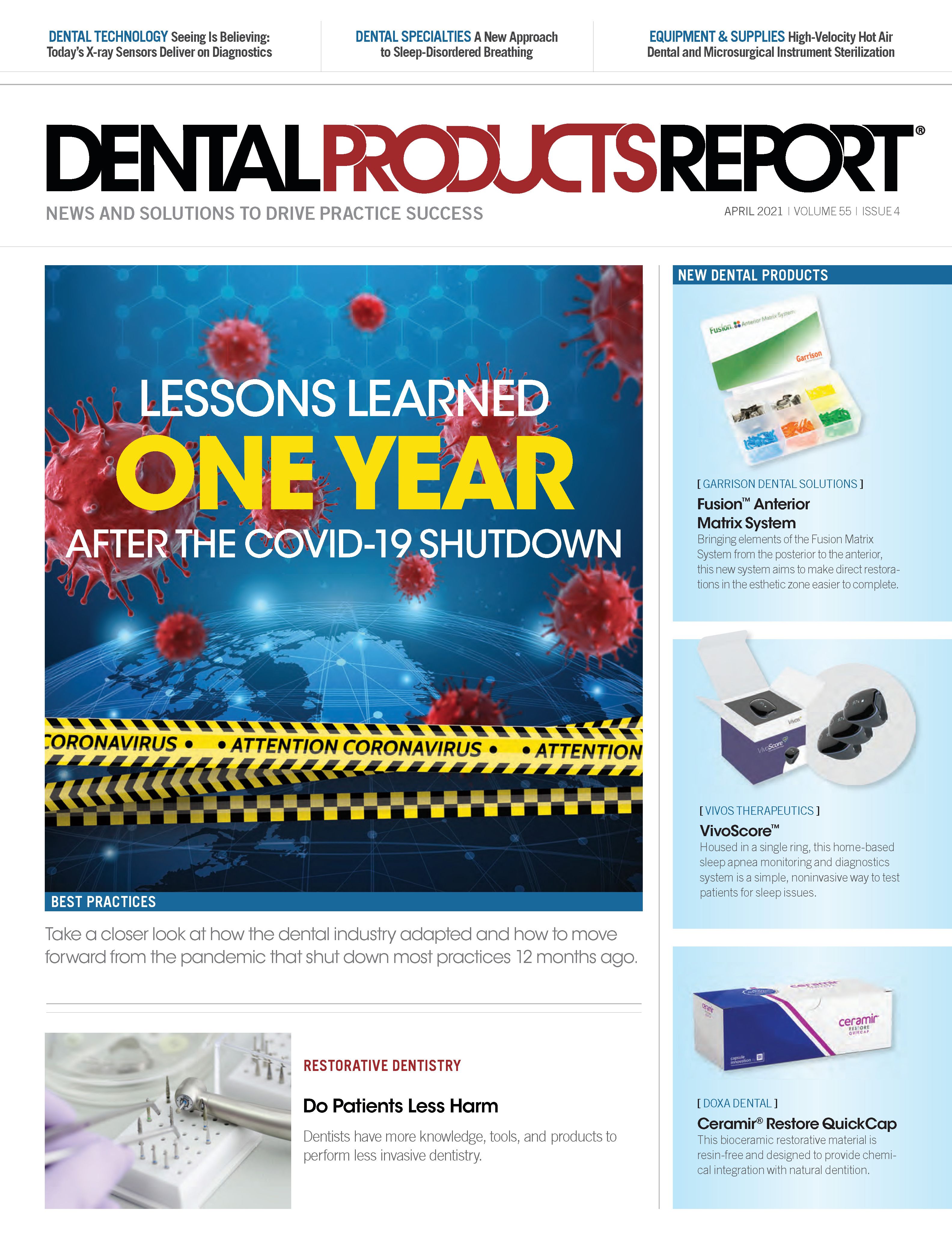
Maximizing Value: The Hidden Benefits of Preventing Hospital-Acquired Pneumonia Through Oral Hygiene
September 10th 2024Originally posted on Infection Control Today. Hospital-acquired pneumonia (HAP) is a significant infection prevention concern, leading to high patient mortality, increased health care costs, and ICU usage. Oral hygiene is an effective preventive measure.